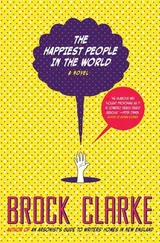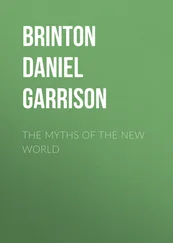‘They didn’t say anything!’ he insisted. ‘By law, due to the number of inhabitants we have here, we should have around four to seven cops. But we don’t want police here. The one policeman we had wasn’t allowed to have a gun. Then when he retired, he wasn’t thrown out of the village or anything – but we didn’t hire a new policeman, because we don’t need one. Because we have our voluntary work, because we throw a lot of parties and party collectively, because we fight together, because we make our lives together, there is a high degree of good neighbourliness. When we plant trees, we do that together, too.’
Sánchez Gordillo’s articulation of what the word ‘community’ means is especially striking when you consider how blithely and emptily the word is used by mainstream politicians across the West.
Suspicion of the state, of any extension of centralised power, is something that flourishes in the Andalusian soil – and has been especially intensified in Marinaleda, thanks to its unique three decades of struggle. Of course, there is always the Guardia Civil. You see them slowly driving down Avenida de la Libertad sometimes, suspicious sentinels of a remote but destructive power, patrolling in their green and white cars, still adorned with the emblem of the royal crown over a sword crossed with a fasces .
The young lads standing outside the bars purse their lips or mutter obscenities, careful not to do so too loudly. The Guardia still have jurisdiction, as Spain’s national gendarmerie; the local station is in Herrera, six miles away. Hypothetically, if there was a sudden and vicious murder, it would be members of this Guardia who would be summoned to deal with it.
In 2007, the Herrera force was called in after repeated robberies and vandalism at the two schools in Marinaleda. A small group, largely suspected to be a few students with discipline problems who rarely attended class, had stolen pieces of sports equipment from the school and left a trail of broken glass, forced doors and windows, and walls daubed with insults aimed at their teachers.
Normally, if there’s this kind of trouble, they don’t let it get as far as the Guardia. I heard one story of a group of local youngsters committing acts of boredom-inspired petty vandalism, throwing stones and blowing up letterboxes with fireworks, so the residents on the street affected spoke to Sánchez Gordillo, who gave them his mobile number and told them to call if it happened again. It did, and they called him at 11 pm one night. He turned up five minutes later in a car, and the kids scarpered; but he worked out who they were, went and talked to their parents, and it never happened again.
The young people do get bored sometimes, as they do in small villages everywhere. Weed is smoked slyly, and not so slyly, in the fields away from the grown-ups, or in a huddle on the Casa de Cultura staircase. Other recreational activities not permitted in parents’ homes have caused problems. On one recent visit, while taking a stroll, I noticed a sign affixed to the allotment and garden situated next to the school. ‘This park is for enjoying, not fucking’, it said, dispensing with any attempt at euphemism. The young people can get bored, but – and it’s a ‘but’ acknowledged by them and their parents alike – it could be so much worse. They have innumerable sporting options, free Wi-Fi at home, a park and swimming pool to hang out in, free computers in the Casa de Cultura internet café, and in general, a hell of a lot more going on than in most villages of fewer than 3,000 people. And when they grow up they have the possibility of work and home ownership denied to the majority of their peers elsewhere in Spain.
Their grandparents are certainly well occupied, not least in the Centro de Adultos, where, among other things, literacy classes provide education for an older generation that never had the chance to complete formal schooling. It’s also a social hub, especially popular with the village’s older women. There’s even a thrice-weekly evening class in Spanish for the village’s émigrés, mostly Brits plus the odd Frenchman, Romanian and Senegalese. The evening classes are all brought together for termly day-trips to regional sites of interest, like the Alhambra in Granada. During one of my visits, I was invited to a pre-Christmas meal where the women made us migas , a popular peasant dish consisting entirely of mounds and mounds of fried breadcrumbs – served with wedges of fresh orange to cut through all the oil. It felt as heavy and dense as the dirt in the fields; but again, I hadn’t spent all day working in them, so probably hadn’t built up the right kind, or volume, of appetite. For dessert we were served another delicacy, gachas dulces – which again looked rather like gloop, tasted rather like gloop, weighed a tonne and, all told, was quite pleasant.
After we’d finished eating, the old ladies tried to get the last few breadcrumbs off the plates by smacking the back of them with plastic spoons – a deafening impromptu percussion section, accompanied by plenty of giggling. Following an earlier discussion about leche frita , a kind of deep-fried custard, one of the teachers, Rafa, a kindly man in his late thirties with a childlike sensibility, beamed and led the old ladies in a chant of ‘ ¡Queremos leche frita! ¡Queremos leche frita! ’ (we want leche frita !). They banged their plates in time as the chants grew louder, before finally dissolving into laughter. ‘This is what it’s like all the time,’ said la inglesa Ali, fondly, with a smile and an eye-roll. ‘If the lunatics ever do take over the asylum, this is what it’ll look like.’
After things settled down again, I pulled out my Huelga de Hambre book, and they crowded round to look at the pictures. Like the veterans of la lucha in the olive oil factory, they’d never seen them before. There was again a great deal of reminiscing about the assemblies, the hunger and the heat, the friends who had since passed on. Hands clapped brows: what a strange, distant place August 1980 was. They have created a remarkable world since then, but they grew up in one, too. One older woman in the class recalled giving birth to her third child, out in the fields; the defining characteristic about this particular birth, the thing that jogged her memory, was not that it happened in the middle of a field – an unsurprising detail – but that it was raining that day. ‘Oh yes!’ responded her friend, ‘it was raining that day.’
Afterwards, Rafa took me to see the village library in the building opposite. I asked about village archives, and he said regretfully there wasn’t really anything at all. We leafed through the official Ayuntamiento de Andalucía statistics almanacs, the kind of dry tome that every local library has, but there is no proper archive available to the villagers. There weren’t many political books at all, in fact, let alone any specific to the Andalusian struggle: only a lonely copy of Lenin’s ¿Qué hacer? ( What Is to Be Done? ).
For a village and a region with such an extraordinary history, it’s remarkably under-historicised. In the Ayuntamiento, there are no meaningful archives either. ‘It’s surprising, I know,’ one amiable employee, Manolo, told me, ‘not least because local government is so bureaucratic!’ Directly downstairs from the library is the pensioners’ social club, where the old men drink one-euro coffees and cañitas , read the newspapers, and play cards most of the day. The history is with them, passed down the generations through storytelling and the reproduction of the practice of struggle, rather than upstairs in the library.
One local organisation that does keep records of its activities – and publishes them in a magazine-like bulletin – is the institution that has had a guiding hand throughout so much of Spanish history: the Church. You wouldn’t think they had much of a history in Marinaleda since 1979, if you read any of the short online pieces about the village. Indeed, when I asked him about Christian festivities and the village’s attitude to Catholic tradition and faith, Sánchez Gordillo told me confidently: ‘We are not religious.’ Even at the time, this seemed a bit of a presumptuous generalisation. Almost every village in Spain, however small, has a church – Marinaleda has two, in fact, one in each barrio. ‘Yes, there is a church,’ he admitted, in a manner that suggested I had missed the point, ‘but there’s no priest. Priests are dangerous. We like to say, “Thank God we have no priest.’ ”
Читать дальше












